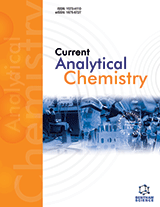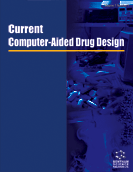Abstract
Plant polyphenols exhibit potentially useful effects in a wide variety of pathophysiological settings. They interact with proteins such as signalling kinases, transcription factors and ion channels, and modulate redox processes, such as those taking place in mitochondria. Biomedical applications of these natural compounds are however severely hindered by their low bioavailability, rapid metabolism, and often by unfavourable physico-chemical properties, e.g. a generally low water solubility. Derivatives are under development with the aim of improving their bioavailability and/or bioefficacy. Various strategies can be adopted. An increase in circulating blood levels of non-metabolized natural compound may be attainable through prodrugs. In the ideal prodrug, phenolic hydroxyls are protected by capping groups which a) help or at least do not hinder permeation of epithelia; b) prevent conjugative modifications during absorption and first-pass through the liver; c) are eliminated with opportune kinetics to regenerate the parent compound. Moreover, prodrugs may be designed with the goals of modulating physical properties of the parent compound, and/or changing its distribution in the body. A more specific action may be achieved by concentrating the compounds at specific sites of action. An example of the second approach is represented by mitochondria-targeted redox-active polyphenol derivatives, designed to intervene on radical processes in these organelles and as a tool either to protect cells from oxidative insults or to precipitate their death. Mitochondrial targeting can be achieved through conjugation with a triphenylphosphonium lipophilic cation. Quercetin and resveratrol were chosen as model polyphenols for these proof-of-concept studies. Data available at the moment show that both quercetin and resveratrol mitochondria-targeted derivatives are pro-oxidant and cytotoxic in vitro, selectively killing fast-growing and tumoural cells when supplied in the low μM range; the mechanism of ROS generation appears to differ between the two classes of compounds.
These approaches are emerging as promising strategies to obtain new efficient chemopreventive and/or chemotherapeutic drugs based on polyphenols derivatives.
Keywords: Bioavailability, catechins, mitochondria, polyphenols, prodrugs, quercetin, resveratrol, triphenylphosphonium.
Graphical Abstract
Anti-Cancer Agents in Medicinal Chemistry
Title:Improving the Efficacy of Plant Polyphenols
Volume: 14 Issue: 10
Author(s): Lucia Biasutto, Andrea Mattarei, Nicola Sassi, Michele Azzolini, Matteo Romio, Cristina Paradisi and Mario Zoratti
Affiliation:
Keywords: Bioavailability, catechins, mitochondria, polyphenols, prodrugs, quercetin, resveratrol, triphenylphosphonium.
Abstract: Plant polyphenols exhibit potentially useful effects in a wide variety of pathophysiological settings. They interact with proteins such as signalling kinases, transcription factors and ion channels, and modulate redox processes, such as those taking place in mitochondria. Biomedical applications of these natural compounds are however severely hindered by their low bioavailability, rapid metabolism, and often by unfavourable physico-chemical properties, e.g. a generally low water solubility. Derivatives are under development with the aim of improving their bioavailability and/or bioefficacy. Various strategies can be adopted. An increase in circulating blood levels of non-metabolized natural compound may be attainable through prodrugs. In the ideal prodrug, phenolic hydroxyls are protected by capping groups which a) help or at least do not hinder permeation of epithelia; b) prevent conjugative modifications during absorption and first-pass through the liver; c) are eliminated with opportune kinetics to regenerate the parent compound. Moreover, prodrugs may be designed with the goals of modulating physical properties of the parent compound, and/or changing its distribution in the body. A more specific action may be achieved by concentrating the compounds at specific sites of action. An example of the second approach is represented by mitochondria-targeted redox-active polyphenol derivatives, designed to intervene on radical processes in these organelles and as a tool either to protect cells from oxidative insults or to precipitate their death. Mitochondrial targeting can be achieved through conjugation with a triphenylphosphonium lipophilic cation. Quercetin and resveratrol were chosen as model polyphenols for these proof-of-concept studies. Data available at the moment show that both quercetin and resveratrol mitochondria-targeted derivatives are pro-oxidant and cytotoxic in vitro, selectively killing fast-growing and tumoural cells when supplied in the low μM range; the mechanism of ROS generation appears to differ between the two classes of compounds.
These approaches are emerging as promising strategies to obtain new efficient chemopreventive and/or chemotherapeutic drugs based on polyphenols derivatives.
Export Options
About this article
Cite this article as:
Biasutto Lucia, Mattarei Andrea, Sassi Nicola, Azzolini Michele, Romio Matteo, Paradisi Cristina and Zoratti Mario, Improving the Efficacy of Plant Polyphenols, Anti-Cancer Agents in Medicinal Chemistry 2014; 14 (10) . https://dx.doi.org/10.2174/1871520614666140627150054
| DOI https://dx.doi.org/10.2174/1871520614666140627150054 |
Print ISSN 1871-5206 |
| Publisher Name Bentham Science Publisher |
Online ISSN 1875-5992 |
 46
46
- Author Guidelines
- Bentham Author Support Services (BASS)
- Graphical Abstracts
- Fabricating and Stating False Information
- Research Misconduct
- Post Publication Discussions and Corrections
- Publishing Ethics and Rectitude
- Increase Visibility of Your Article
- Archiving Policies
- Peer Review Workflow
- Order Your Article Before Print
- Promote Your Article
- Manuscript Transfer Facility
- Editorial Policies
- Allegations from Whistleblowers
Related Articles
-
Prostaglandin J2 Family and the Cardiovascular System
Current Vascular Pharmacology Crosstalk Between Epidermal Growth Factor Receptor- and Insulin-Like Growth Factor-1 Receptor Signaling: Implications for Cancer Therapy
Current Cancer Drug Targets Critical Illness in Obstetric Patients: Venous Thromboembolism in Pregnancy
Current Women`s Health Reviews Probiotics: From Functional Foods to Pharmaceutical Products
Current Pharmaceutical Biotechnology The Association Between the Chronic Use of Non-Steroidal Anti- Inflammatory Drugs and Oxidative and Inflammatory Markers in the Elderly
Inflammation & Allergy - Drug Targets (Discontinued) Sesbania: A Prospective Candidate to be Excavated for Anticancer Drugs
The Natural Products Journal Cytotoxic Thiol Alkylators
Mini-Reviews in Medicinal Chemistry The DNA-Binding and Bioactivity of Rare Earth Metal Complexes
Mini-Reviews in Medicinal Chemistry Anti-Egfr Therapy in Colorectal Cancer: How to Choose The Right Patient
Current Drug Targets Molecular Targets and Targeted Therapies for Malignant Mesothelioma
Current Medicinal Chemistry Preventive and Therapeutic Role of Muscle Contraction Against Chronic Diseases
Current Pharmaceutical Design YB-1 Protein and Multidrug Resistance of Tumor Cells
Current Signal Transduction Therapy Chemodiversity in Freshwater and Terrestrial Cyanobacteria – A Source for Drug Discovery
Current Drug Targets Role of Tyrosine Kinase Inhibitor Molecules in Non Small Cell Lung Cancer:From Benchside to Bedside
Current Respiratory Medicine Reviews Honokiol: A Novel Natural Agent for Cancer Prevention and Therapy
Current Molecular Medicine Trends in Cell-Based Electrochemical Biosensors
Current Medicinal Chemistry Cyclooxygenase-2 (COX-2) Mediates Arsenite Inhibition of UVB-Induced Cellular Apoptosis in Mouse Epidermal Cl41 Cells
Current Cancer Drug Targets Aptamers: Potential Applications to Pancreatic Cancer Therapy
Anti-Cancer Agents in Medicinal Chemistry Microsomal Prostaglandin E2 Synthase-1 as a New Macromolecular Drug Target in the Prevention of Inflammation and Cancer
Anti-Cancer Agents in Medicinal Chemistry Treatment of Chronic Hypercalcemia
Medicinal Chemistry


























